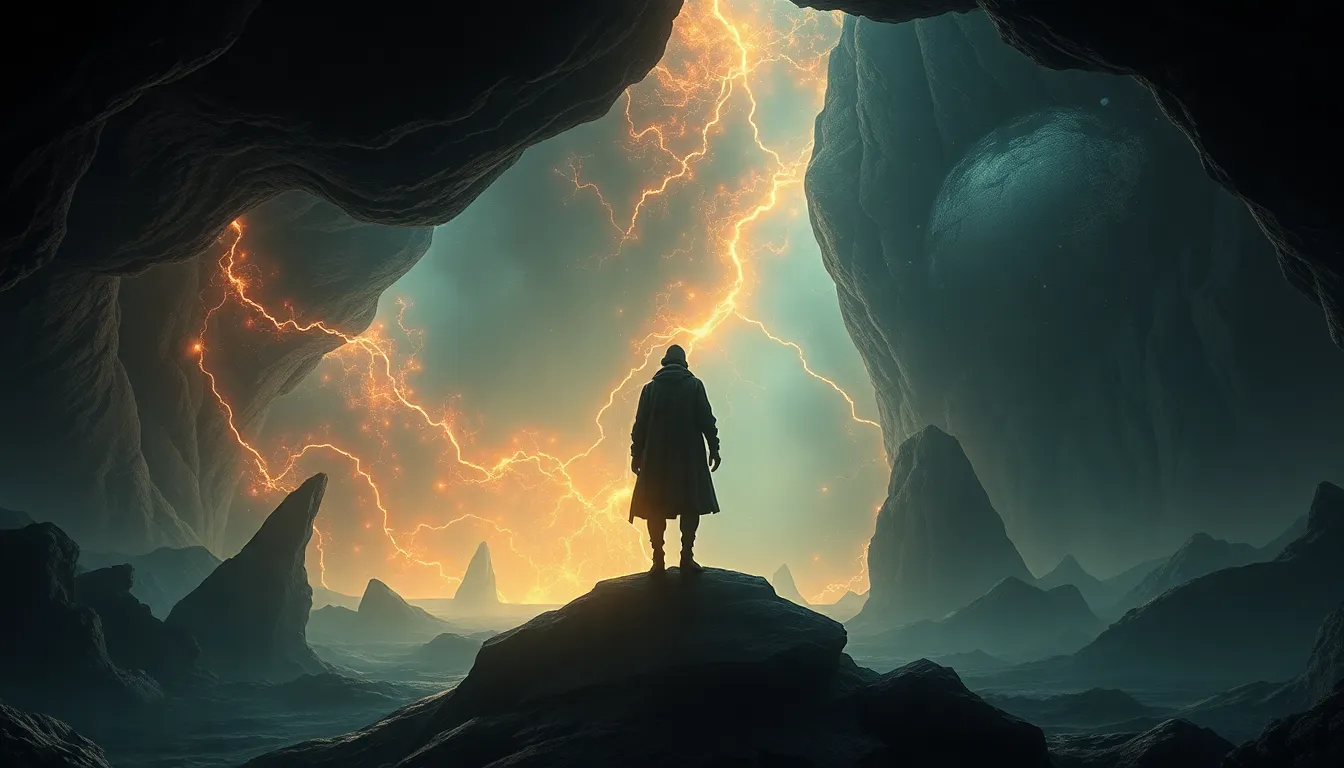The Underworld: Myths That Challenge Our Perception of Reality
I. Introduction
The concept of the Underworld has fascinated humanity for centuries, serving as a realm of mystery and intrigue across various cultures. In this context, the Underworld is often defined as a place where souls go after death, a liminal space that embodies both fear and hope. Different cultures have their own interpretations, from the Greek Hades to the Egyptian Duat, each presenting a unique perspective on mortality and the afterlife.
The purpose of exploring myths related to the Underworld is to uncover the underlying truths they reveal about human existence, morality, and our collective psyche. These narratives challenge our perceptions of reality, offering insights into how different societies understand life, death, and what lies beyond.
II. The Underworld in Different Cultures
The Underworld manifests in various forms across major mythologies:
- Greek Mythology: The Underworld, known as Hades, is ruled by the god Hades and features various realms such as the Elysian Fields and Tartarus.
- Roman Mythology: The Roman counterpart of Hades is Pluto, overseeing a similar structure with a focus on the afterlife’s moral implications.
- Egyptian Mythology: The Duat is a complex realm where souls are judged by Osiris, reflecting the emphasis on morality and the afterlife.
- Hindu Mythology: Yama, the god of death, governs Naraka, where souls face consequences for their earthly actions.
This comparative analysis reveals that while the specifics may differ, common themes such as judgment, moral reckoning, and the promise of rebirth or punishment are prevalent. The symbolism of the Underworld often reflects cultural narratives that address existential questions and human fears, reinforcing the significance of these myths in our understanding of life and death.
III. The Role of Deities and Spirits
Key figures associated with the Underworld play crucial roles in shaping cultural beliefs:
- Hades: Represents the inevitability of death and the afterlife’s finality.
- Osiris: Embodies resurrection and the promise of eternal life through moral living.
- Yama: Serves as both a judge and guide, emphasizing the moral choices made during life.
These deities reflect human fears and aspirations, encapsulating the struggle between life and death, and morality and immorality. Their narratives often serve as cautionary tales, highlighting the consequences of one’s actions and the hope for redemption.
IV. The Journey to the Underworld
Many myths describe the journey to the Underworld, often emphasizing themes of death and rebirth:
- Orpheus: His descent to retrieve Eurydice underscores love’s power and the dangers of defying the natural order.
- Gilgamesh: The epic highlights the quest for immortality, ultimately leading to a deeper understanding of human limitations.
These journeys symbolize not only the inevitability of death but also the potential for transformation and growth. They illustrate how different cultures perceive the cycle of life and death, shaping societal views on the afterlife and legacy.
V. The Underworld as a Reflection of Human Psyche
Psychological interpretations of Underworld myths reveal deeper truths about the human condition:
- The Underworld often serves as a metaphor for personal struggles, representing the darker aspects of the psyche.
- Myths portray the journey into the Underworld as a path to self-discovery and transformation.
Modern psychology recognizes the influence of these myths on self-perception, illustrating how they resonate with our internal conflicts and aspirations. They provide a framework for understanding our fears and the potential for personal growth through adversity.
VI. The Underworld and Morality
Underworld myths convey vital moral lessons, serving as guides for ethical behavior:
- The concept of judgment is prevalent, where souls face consequences for their earthly actions.
- These narratives often illustrate the relationship between morality and human behavior, reinforcing societal values.
In cultures as diverse as ancient Greece and modern societies, the Underworld acts as a moral compass, reminding individuals of the importance of virtue and the potential repercussions of their choices.
VII. The Underworld in Modern Literature and Media
Contemporary storytelling frequently revisits Underworld themes, reshaping traditional narratives:
- Films like “The Matrix” explore alternate realities and the concept of death and rebirth.
- Literature, such as Neil Gaiman’s “American Gods,” reinterprets ancient deities in modern contexts.
These narratives often challenge or reinforce traditional views, reflecting contemporary society’s struggles with identity, morality, and the meaning of life and death. The relevance of Underworld myths persists, resonating with audiences seeking understanding in a complex world.
VIII. The Influence of Technology on Perceptions of the Underworld
Digital media is reshaping how we engage with Underworld myths:
- Virtual realities allow for immersive experiences, prompting new interpretations of life and death.
- Online platforms facilitate the sharing and evolution of these ancient narratives, keeping them relevant.
Technology alters our engagement with these myths, enabling exploration and reflection in ways previously unimaginable, thus deepening our understanding of the Underworld and its implications for human existence.
IX. The Underworld and Spirituality
Spiritual beliefs related to the Underworld emphasize the interconnectedness of life and death:
- Myths often serve as frameworks for understanding spiritual journeys and afterlife beliefs.
- They encourage reflection on one’s life choices and the pursuit of a meaningful existence.
As cultures evolve, the Underworld remains a potent symbol of the human experience, inviting exploration of spirituality and the mysteries of existence.


